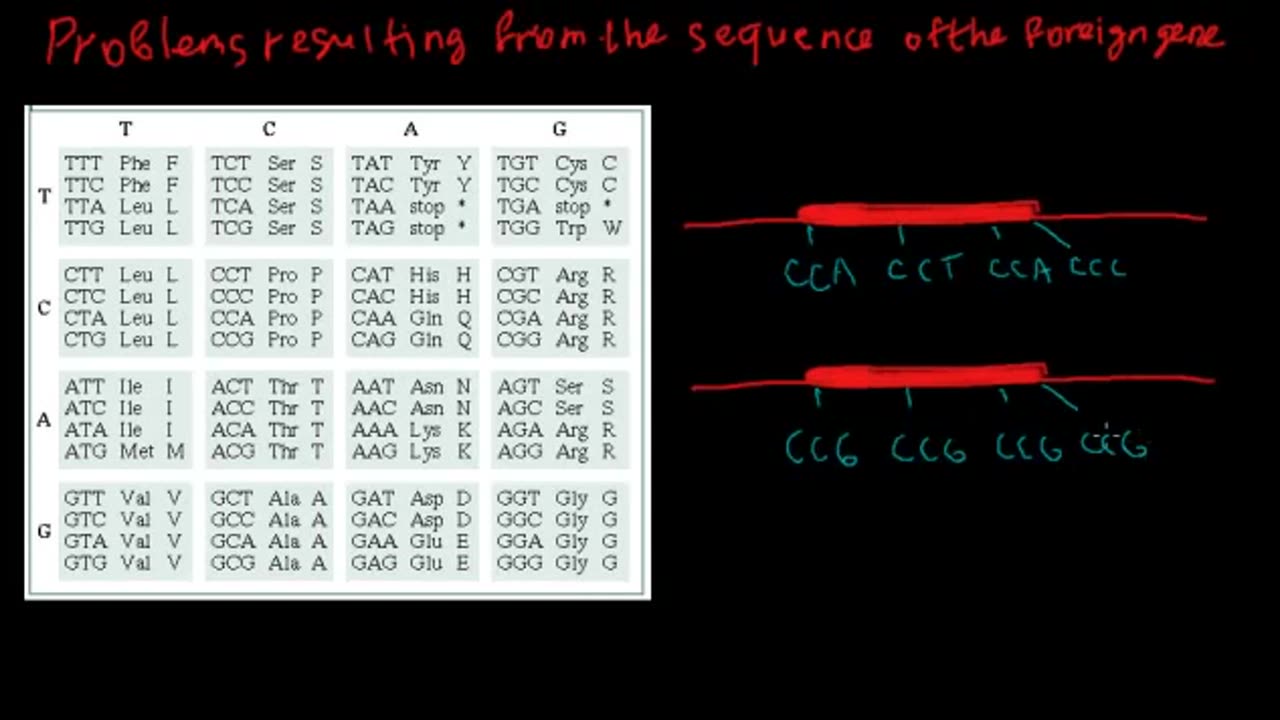Premium Only Content

Expression of eukaryotic genes in prokaryotes (bacteria)
There are many differences between prokaryotic and eukaryotic cells. Some of these differences are structural whereas others are procedural. Two of the processes that are substantially different between prokaryotes and eukaryotes are gene expression and the regulation of it. Both types of cells transcribe DNA into mRNA, which is then translated into polypeptides, but the specifics of these processes differ.
Location
Prokaryotes lack nuclei and other organelles, which are specialized, membrane-bound compartments, whereas eukaryotes do have them. In fact, the word "eukaryote" means "true nucleus." In eukaryotes the cell's genome is located in the nucleus. Transcription thus occurs in the nucleus, and the mRNA transcript is subsequently exported through nuclear pores (pores in the nuclear envelope) to the cytoplasm for translation. By contrast, prokaryotic transcription and translation are not spatially or temporally segregated.
Initiation of Transcription
Promoter elements are short sequences of DNA that bind to a cell's transcriptional initiation factors. Prokaryotes have three promoter elements: one that is upstream of the gene being transcribed, one that is 10 nucleotides downstream of it and one that is 35 nucleotides downstream. Eukaryotes have a much larger set of promoter elements, the primary one being the TATA box. Eukaryotic transcription initiation factors assemble an initiation complex, which dissociates at the end of initiation. Prokaryotic transcription initiation factors do not assemble an initiation complex.
Ribosomes
Ribosomes are translation sites composed of RNA and protein that bind to a cell's mRNA and tRNA. Prokaryotes have 70S ribosomes whereas eukaryotes have 80S ribosomes. The "S" refers to the sedimentation coefficient, a measure of a particle's size, mass and shape. An 80S ribosome is composed of a 40S subunit and a 60S subunit while a 70S ribosome consists of a 30S subunit and a 50S subunit.
Polycistronic mRNA
In addition to having different transcription and translation machinery, prokaryotes and eukaryotes differ in their gene regulation. Eukaryotic regulation is much more complex and often relies on various feedback mechanisms, developmental processes and environmental factors. By contrast, prokaryotes regulate entire metabolic pathways rather than regulating each enzyme separately. Bacterial enzymes for a given pathway are adjacent to each other on a cell's DNA and are transcribed into one mRNA. This mRNA is called polycistronic mRNA. When a cell needs more or less of a pathway's enzymes, it simply transcribes more or less of that pathway's mRNA.
-
 1:15:58
1:15:58
DeVory Darkins
1 hour agoLIVE NOW: Democrats SABOTAGE GOP effort to reopen Government
26K31 -
 1:21:21
1:21:21
Tucker Carlson
1 hour agoThe Global War on Christianity Just Got a Whole Lot Worse, and Ted Cruz Doesn’t Care
4.96K62 -
 10:50
10:50
Dr. Nick Zyrowski
2 days agoDoctors Got It Wrong! This LOWERS CORTISOL In Minutes!
8362 -
 24:14
24:14
Verified Investing
2 days agoBiggest Trade As AI Bubble Begins To Burst, Bitcoin Flushes Through 100K And Gold Set To Fall
25 -
 1:12:28
1:12:28
Sean Unpaved
1 hour agoAB's Dubai Drama: Extradited & Exposed + NFL Week 10 Locks & CFB Week 11 Upsets
2.79K -
 2:06:08
2:06:08
The Culture War with Tim Pool
3 hours agoDemocrats Elect Man Who Wants To Kill Conservatives, Time For An Exorcism | The Culture War Podcast
89.2K83 -
 1:36:52
1:36:52
Steven Crowder
5 hours agoMamdani's Anti-White Victory Must Be America's Wake Up Call
226K259 -
 LIVE
LIVE
Dr Disrespect
4 hours ago🔴LIVE - DR DISRESPECT - ARC RAIDERS - AGAINST ALL DANGER
1,509 watching -
 LIVE
LIVE
Side Scrollers Podcast
3 hours agoGTA 6 GETS WRECKED AFTER ANOTHER DELAY + India THREATENS YouTuber Over Video + More | Side Scrollers
890 watching -
 1:00:20
1:00:20
Simply Bitcoin
5 hours ago $0.06 earnedThe Bitcoin Crucible w/ Alex Stanczyk ft Tomer Strolight - Episode 7
23.6K